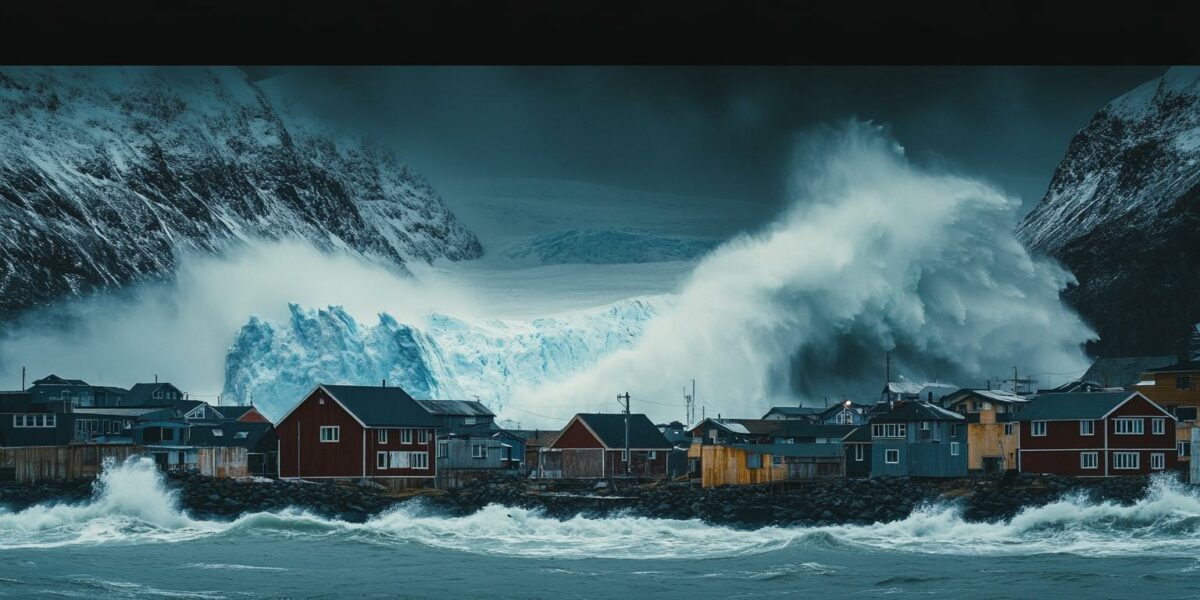The Unseen Impact of the Inflation Reduction Act
On August 16, 2022, President Joe Biden enacted the Inflation Reduction Act, marking the most substantial investment in clean energy and climate action in U.S. history. Now, two years later, NOAA is channeling an unprecedented $3.3 billion into building a climate-resilient future. This significant investment arrives at a pivotal moment in our fight against climate change.
As climate change continues to shape our century, extreme weather events are becoming increasingly common across the nation. From 1980 to 2023, the U.S. averaged 8.5 major weather and climate disasters per year, each causing over $1 billion in damages. In 2024 alone, there have already been 19 such events, with more expected. Last year, these disasters resulted in a record $28 billion in damages.
In Alaska, the effects of climate change are particularly evident. Warming ocean temperatures are accelerating the loss of protective sea ice, increasing shoreline vulnerability. Nearly two years ago, Typhoon Merbok wreaked havoc on communities, disrupting critical food resources during the fall subsistence harvest season.
Despite the overwhelming challenges, the Inflation Reduction Act is providing communities with the resources needed to combat climate impacts effectively. President Biden and Vice President Kamala Harris have championed these historic investments, empowering local expertise to strengthen resilience efforts nationwide.
Transforming Workforce and Research Efforts
The Inflation Reduction Act is not just about immediate relief; it’s also about long-term planning. The act funds initiatives to train and place thousands of individuals in jobs focused on resilience efforts, helping the nation become more climate-ready. Private sector businesses are also reaping the benefits of enhanced environmental intelligence from NOAA, thanks to these funds.
As we endure record-breaking temperatures, heat domes, droughts, and wildfires, heat-related illnesses remain the leading weather-related killers. The Inflation Reduction Act is financing research and interventions to mitigate these risks. Experts now have the resources to tackle climate-driven hazards more effectively, improving drought and coastal monitoring efforts.
Alaska is already seeing the benefits of these investments. Last month, the Climate Resilience Regional Challenge awarded $78.9 million to Alaskan communities to bolster their resilience against climate change and coastal hazards.
Key benefits include:
- Enhanced training programs for climate resilience jobs
- Improved environmental intelligence for businesses
- Increased funding for research and intervention strategies
Scaling Up Successful Projects
Building on the current momentum is crucial for increasing coastal resilience in the future. Across the country, communities now have unprecedented opportunities to expand on NOAA’s progress. The demand for funding in NOAA’s Climate Resilience Regional Challenge was 28 times greater than available resources, highlighting the extraordinary need for support in coastal communities.
The Biden-Harris Administration is leveraging Inflation Reduction Act funds to redefine our relationship with Earth’s systems. We are constructing and reconstructing community infrastructure to support both sustainability and economic health—two goals that synergize more than they conflict.
Two years after its enactment, the Inflation Reduction Act has proven to be remarkably popular. Just as President Franklin Delano Roosevelt’s New Deal left a lasting legacy, Biden’s Inflation Reduction Act is set to ensure our descendants can enjoy the natural beauty we strive to preserve today.
The Inflation Reduction Act stands as a testament to what can be achieved when significant investments are made in climate action. These efforts are not just about mitigating current impacts but also about preparing for a sustainable future where economic and environmental health go hand in hand.
A Lasting Legacy for Future Generations
The legacy of the Inflation Reduction Act will be felt for generations to come. By investing in climate resilience, we are ensuring that our great-grandchildren will benefit from the sustainable practices we implement today. The act provides a blueprint for how to navigate the challenges of climate change while fostering economic growth.
Communities across the nation are now better equipped to handle the impacts of climate change. The investments made through the Inflation Reduction Act are empowering local leaders and experts to take decisive action, ensuring a more resilient future for all.
The synergy between environmental sustainability and economic prosperity is becoming increasingly evident. These investments are paving the way for a future where both can thrive, proving that they are not mutually exclusive goals.
As we reflect on the two years since the Inflation Reduction Act was signed into law, it is clear that this landmark legislation has set a new standard for climate action. The progress we have made is a testament to the power of dedicated investment in our planet’s future.



SocksTitan
78.9 million to Alaskan communities is impressive! Do we know how they plan to use these funds specifically?
caleb
Improved environmental intelligence for businesses sounds great, but what about small businesses? Will they also benefit?
NathanEmpyrean
How can we ensure this momentum continues beyond the current administration? It’s crucial for our future.
HarrisonLabyrinth6
I can’t believe there have already been 19 major weather events this year! What’s next?
nathaniel_quasar
Great article, but how long will it take for these investments to show real, tangible results?
autumn
Thanks for the detailed breakdown! It’s good to see some positive action on climate change for once. 😊
nathanielechoes
Is anyone else concerned about the pace of these climate disasters increasing? It’s kinda scary!
JoshuaStardancer
Wow, $3.3 billion is a huge amount! How exactly is NOAA planning to use this money? 🤔